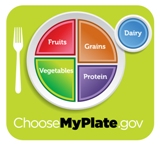Uncategorized
Dairy Groups Urge House Members to Vote to Approve TPA Package
The National Milk Producers Federation and U.S. Dairy Export Council urge House members to vote Friday to approve new Trade Promotion Authority and Trade Adjustment Assistance measures when they reach the floor. TPA is central to negotiating trade agreements that could be beneficial to the United States. That prospect includes the Trans-Pacific Partnership, the Transatlantic Trade & Investment Partnership, and future free trade agreements. Trade Adjustment Assistance has been for years an important complement to TPA, which is why both pieces of legislation have moved in concert. We urge support for it as well.
Without TPA, we cannot match our competitors’ aggressiveness in pursuit of their trade agendas. With TPA, we can move our own agenda forward and ensure that our position in foreign markets is not eroded. TPA provides the leverage our negotiators need to conclude trade agreements that are good for the dairy industry. TPA also governs the rules for how Congress will review and approve trade agreements that meet the Congressional requirements laid out in TPA.
But a vote for TPA is not a vote for TPP or any other trade agreement. It does not prejudge the treaty terms themselves. Our negotiators are working hard to deliver a trade agreement that reflect the basic needs of the dairy industry. TPA allows negotiators to finish their job and then allows a meaningful debate on the merits of these agreements.
###
The National Milk Producers Federation, based in Arlington, Va., develops and carries out policies that advance the well-being of U.S. dairy producers and the cooperatives they collectively own. The members of NMPF’s cooperatives produce the majority of the U.S, milk supply, making NMPF the voice of nearly 32,000 dairy producers on Capitol Hill and with government agencies. For more on NMPF’s activities, visit www.nmpf.org.
The U.S. Dairy Export Council is a non-profit, independent membership organization that represents the global trade interests of U.S. dairy producers, proprietary processors and cooperatives, ingredient suppliers and export traders. Its mission is to enhance U.S. global competitiveness and assist the U.S. industry to increase its global dairy ingredient sales and exports of U.S. dairy products. USDEC accomplishes this through programs in market development that build global demand for U.S. dairy products, resolve market access barriers and advance industry trade policy goals. USDEC is supported by staff across the United States and overseas in Mexico, South America, Asia, Middle East and Europe. The U.S. Dairy Export Council prohibits discrimination on the basis of age, disability, national origin, race, color, religion, creed, gender, sexual orientation, political beliefs, marital status, military status, and arrest or conviction record. www.usdec.org
FARM Program Statement on Cactus Acres Holsteins Dairy, Ft. Morgan, Colorado
Statement from Emily Meredith, Vice President Animal Care:
CWT to Continue Offering Dairy Farmer-Funded Export Assistance through 2018
 ARLINGTON, VA – The board of directors of the National Milk Producers Federation (NMPF) today voted to continue Cooperatives Working Together, the farmer-funded export assistance program, through 2018 at the current funding level of four cents per hundredweight. NMPF developed and manages the 13-year-old self-help program, known as CWT.
ARLINGTON, VA – The board of directors of the National Milk Producers Federation (NMPF) today voted to continue Cooperatives Working Together, the farmer-funded export assistance program, through 2018 at the current funding level of four cents per hundredweight. NMPF developed and manages the 13-year-old self-help program, known as CWT.
CWT’s extension until December 31, 2018, comes at a time of increasing U.S. milk production, declining world dairy prices and increased global competition due to the removal of European Union milk quotas.
“With the United States exporting the equivalent of one-seventh of its milk production, today’s vote will help ensure that this country remains a consistent and competitive supplier of dairy products to the world,” said NMPF Board Chairman Randy Mooney, a dairy farmer from Rogersville, MO.
“Through its vote, the NMPF board recognizes how important CWT is in helping every farmer gain access to fast-growing overseas markets,” Mooney added. “The program remains a tremendous self-help tool for all of America’s dairy producers.”
CWT is a voluntary membership program funded by contributions from 37 dairy cooperatives and more than 100 individual farmers. The money raised from the CWT membership fee of four cents per hundredweight helps maintain U.S. exports in an increasingly competitive world market.
CWT’s member cooperatives submit bids requesting help with sales in specific foreign markets. Only if the amount is justified is the bid accepted and financial assistance provided. The bidder then has six months to deliver the product to the overseas purchaser.
Through the first five months of 2015 alone, CWT has helped its members contract to sell 35.1 million pounds of cheese, 26.6 million pounds of butter and 20.1 million pounds of whole milk powder. Together, these transactions will export the equivalent of 1.07 billion pounds of milk to customers in 28 countries on five continents.
The Cooperatives Working Together (CWT) Export Assistance program is funded by voluntary contributions from dairy cooperatives and individual dairy farmers. The money raised by their investment is being used to strengthen and stabilize the dairy farmers’ milk prices and margins. For more information about CWT, visit www.cwt.coop.
The National Milk Producers Federation (NMPF), based in Arlington, VA, develops and carries out policies that advance the well-being of dairy producers and the cooperatives they own. The members of NMPF’s cooperatives produce the majority of the U.S. milk supply, making NMPF the voice of more than 32,000 dairy producers on Capitol Hill and with government agencies.
House Vote on TPA Likely This Month; Farmers Urged to Contact Representatives
 The House of Representatives is expected to vote on Trade Promotion Authority legislation later this month. It is likely the House will take up the same legislation that passed the Senate May 22 by a margin of 62-37.
The House of Representatives is expected to vote on Trade Promotion Authority legislation later this month. It is likely the House will take up the same legislation that passed the Senate May 22 by a margin of 62-37.
The House TPA measure, after achieving bipartisan support in the Ways and Means Committee, faces stronger headwinds in the full House. As a result, NMPF is asking farmers to continue using the Dairy GREAT grassroots program to urge their representatives to support TPA. Any farmers that have not already used this important tool should do so.
NMPF views TPA as a way to help secure trade agreements that can deliver positive results for U.S. dairy farmers. “Trade promotion authority is crucial to concluding trade agreements that will open foreign markets to more U.S. dairy products,” said NMPF President and CEO Jim Mulhern. “Market access expansion for dairy is not yet where it needs to be in the Trans-Pacific Partnership negotiations, but having TPA in place is essential to increase pressure on Japan and Canada to extend their best offers.” Mulhern said TPA will increase congressional influence over trade negotiations and lead to agreements that are better for both the country and the dairy industry.
“Knowing that a trade agreement will be considered by Congress under Trade Promotion Authority paves the way to press our negotiating partners to make their best offers on the most sensitive issues,” said Mulhern. “Clearly, dairy exports fall into that category, and the U.S. needs all the tools it can muster to get the best possible deal.”
Dairy Groups Urge U.S. to Investigate WTO Impacts of Expanded GI Protections
 In the wake of a diplomatic conference that expanded geographical indications protections for European countries, NMPF joined other dairy organizations in urging the U.S. Trade Representative to evaluate the degree to which the new expansions violate World Trade Organization obligations. Among those potentially hurt by the conference are U.S. dairy producers and processors using generic cheese names.
In the wake of a diplomatic conference that expanded geographical indications protections for European countries, NMPF joined other dairy organizations in urging the U.S. Trade Representative to evaluate the degree to which the new expansions violate World Trade Organization obligations. Among those potentially hurt by the conference are U.S. dairy producers and processors using generic cheese names.
The World Intellectual Property Organization (WIPO), an arm of the United Nations, held two weeks of talks in May that expanded the Lisbon Agreement for the Protection of Appellations of Origin to include geographical indications. It also expanded the protections granted under the international registry of protected terms.
NMPF, the U.S. Dairy Export Council and the International Dairy Foods Association praised the U.S. representatives at the meeting for leading the effort to battle against changes that will seriously impair the ability of companies worldwide to use generic food terms in export markets. Among those affected are U.S. dairy producers and processors relying on numerous generic cheese names.
The three groups also praised U.S. diplomats for leading a coalition of countries in criticizing the lack of an inclusive process during the two-week meeting. In a departure from multiple precedents, WIPO let Lisbon Agreement members deny meaningful participation to the majority of WIPO members.
“The treaty changes were clearly aimed at preventing competitors such as dairy producers and processors in the United States and other non-European countries from using names in international trade that they have used for decades,” said NMPF President and CEO Jim Mulhern. “We appreciate the work the office of the U.S. Trade Representative and the U.S. Patent and Trademark Office, along with the departments of State and Agriculture, have devoted to this issue and look forward to their view on whether the impacts that will result from this treaty violate international trade agreements.”
USDEC President Tom Suber added, “WIPO’s decision to force non-Lisbon members into second-class status at this conference strips the outcome of its legitimacy. It’s equally clear that there are serious WTO consistency problems with the approach Lisbon members decided to pursue and we ask USTR to carefully examine how to address these trade commitment violations.”
NMPF Calls for COOL Fix as U.S. Loses Last Appeal of WTO Trade Violation Finding
 With Canada and Mexico poised to consider higher tariffs on U.S. farm products – including dairy foods – in retaliation for the Country of Origin Labeling program that violates international agreements, NMPF is supporting efforts to brings the United States into compliance with its WTO obligations.
With Canada and Mexico poised to consider higher tariffs on U.S. farm products – including dairy foods – in retaliation for the Country of Origin Labeling program that violates international agreements, NMPF is supporting efforts to brings the United States into compliance with its WTO obligations.
In a May 18 ruling, the World Trade Organization found the U.S. labeling program violates international trade rules. The decision was the last opportunity for the U.S. to appeal earlier WTO findings against the COOL program. As a result, Canada and Mexico are entitled to retaliate against U.S. exports, and that could well include higher tariffs on U.S. dairy products.
NMPF President and CEO Jim Mulhern noted that Canada has already indicated it will target the U.S. dairy industry, and that Mexico retaliated against U.S. dairy products in an earlier trade ruling against the United States just a few years ago.
“America’s dairy farmers should not suffer collateral damage as a consequence of our COOL policy,” Mulhern said. “The U.S. government needs to rectify this situation before we lose any export customers. With U.S. farmers relying more and more on exports for income, we cannot allow the country of origin issue to interfere with dairy trade in this hemisphere.”
The House is expected to take up legislation soon to repeal the Country of Origin Labeling program and the Senate is also looking into a legislative fix to the COOL problem. If nothing is done, the dairy industry could see retaliatory tariffs as early as late summer or fall. Both Mexico and Canada are major export markets for U.S. dairy products.
CWT Helped Keep Member Dairy Cooperatives Competitive in World Markets in May
 Cooperatives Working Together continued in May to help keep its member cooperatives competitive in world markets, as they contracted to sell 18.1 million pounds dairy products to customers in 10 countries on four continents. The products included 5.7 million pounds of American-type cheese, 2.2 million pounds of butter, and 10.2 million pounds of whole milk powder.
Cooperatives Working Together continued in May to help keep its member cooperatives competitive in world markets, as they contracted to sell 18.1 million pounds dairy products to customers in 10 countries on four continents. The products included 5.7 million pounds of American-type cheese, 2.2 million pounds of butter, and 10.2 million pounds of whole milk powder.
These 30 sales contracts bring the year to date 2015 CWT totals to 35.1 million pounds of cheese, 26.6 million pounds of butter, and 20.1 million pounds of whole milk powder. Together, these transactions will export the equivalent of 1.07 billion pounds of milk, on a milkfat basis, to customers in 28 countries on five continents.
Developed by NMPF, CWT is a voluntary export assistance program supported by dairy farmers producing 70 percent of the nation’s milk. By helping to move U.S. dairy products into world markets, CWT helps keep maintain and grow U.S dairy farmers share of these expanding markets which, in turn, keeps dairy farmer milk prices at reasonable levels.
Final ‘Waters of the US’ Rule Not Likely to End Controversy over Definitions, Applications
 The U.S. Environmental Protection Agency’s final Waters of the U.S. (WOTUS) rule, unveiled May 27, is not likely to dampen the controversy over the regulation, with NMPF and a number of farm and business groups continuing to express concerns over the rule.
The U.S. Environmental Protection Agency’s final Waters of the U.S. (WOTUS) rule, unveiled May 27, is not likely to dampen the controversy over the regulation, with NMPF and a number of farm and business groups continuing to express concerns over the rule.
Based on an initial review, NMPF said the regulation doesn’t adequately address concerns the Federation raised about vague definitions and unclear application of the initial proposal. “Above all, agriculture needs certainty on which waterways fall under the jurisdiction of the CWA,” said NMPF President and CEO Jim Mulhern. “EPA’s final rule doesn’t appear to provide that clarity.”
The House has already passed a bill requiring the Environmental Protection Agency and the Army Corps of Engineers to withdraw the rule, and similar legislation is pending in the Senate. Legislators can also attempt to block implementation of the rule through the appropriations process. At the same time, legal challenges to the EPA’s approach are also likely, as attorneys general in at least two states – Oklahoma and Arkansas – are considering seeking injunctions against enforcement of the rule.
The goal of the regulation is to better protect streams and wetlands from pollution. But from the start it was criticized, especially by farm groups, for its vague terminology, and for appearing to vastly increase the waterways subject to regulation under the federal Clean Water Act. The final, 297-page regulation attempts to more clearly define which streams and wetlands are considered tributaries of a navigable waterway, and therefore subject to CWA regulation. But in some instances, it says, case-by-case determinations will be necessary.
NMPF has followed Clean Water Act jurisdiction issues closely for many years. In July, it asked the EPA to withdraw written guidance for when farmers must seek CWA permits for a long list of normal farming activities near wetlands. A bipartisan group of House members backed up NMPF’s concerns and the guidance was eventually withdrawn.
NMPF Offers Federal Agencies Extensive Comments on Dietary Guidelines Report
 Following up on its engagement throughout the U.S. Dietary Guidelines Advisory Committee process, NMPF last month submitted 17 pages of written comments to the Departments of Agriculture and Health and Human Services on the DGAC’s final report and recommendations.
Following up on its engagement throughout the U.S. Dietary Guidelines Advisory Committee process, NMPF last month submitted 17 pages of written comments to the Departments of Agriculture and Health and Human Services on the DGAC’s final report and recommendations.
Like the earlier testimony, the written comments filed in May urged the federal government to continue recommending three servings of dairy a day. They also suggested adding a recommendation for one additional daily serving of milk or dairy foods. Other NMPF recommendations urged the government to:
- Continue to represent dairy as a separate food group
- Encourage those who are lactose intolerant to choose low-lactose dairy products over non-dairy substitutes
- Stop calling non-dairy substitutes “milk” or “yogurt” since they do not meet the federal definitions for those products
- Adopt a balanced approach to nutrients like added sugars so that Americans are not discouraged from consuming otherwise beneficial dairy products like chocolate milk
- Take note of emerging science on the potential benefits of consuming whole-fat dairy foods
- Urge consumers to avoid unpasteurized dairy products since they are a demonstrated health risk
The Dietary Guidelines for Americans, the federal government’s basic nutrition advice for consumers, are updated every five years. The Departments of Agriculture and Health and Human Services will issue the full, formal 2015 Guidelines later this year.
NMPF Works with Congress and IDFA to Reverse Decline in School Milk Consumption
 As Congress prepares to review and reenact federal child nutrition programs, NMPF has worked in concert with the International Dairy Foods Association and two House members to craft legislation aimed at reversing the decline in school milk consumption.
As Congress prepares to review and reenact federal child nutrition programs, NMPF has worked in concert with the International Dairy Foods Association and two House members to craft legislation aimed at reversing the decline in school milk consumption.
The bipartisan School Milk Nutrition Act of 2015, introduced in mid-May by Representatives G.T. Thompson (R-PA) and Joe Courtney (D-CT), reaffirms the long-standing requirement that milk is offered with each school meal. It attacks declining milk consumption with research and a pilot program increasing the variety and availability of milk in schools.
NMPF and IDFA want Congress to consider the Thompson-Courtney bill in the child nutrition reauthorization process. Legal authority to operate the programs expires in September.
“Although milk provides multiple health benefits and is the number one source of nine essential nutrients in the diets of young Americans, many children are not consuming the recommended three servings of milk or other dairy foods a day,” said NMPF President and CEO Jim Mulhern. “In addition, from 2012 to 2014, schools served 187 million fewer half-pints of milk, while total public school enrollment grew.”
Much of that decline, in NMPF’s view, is the result of a decision by USDA to limit flavored milk servings in schools to nonfat-only. NMPF had urged USDA to include lowfat along with nonfat flavored milk, consistent with the U.S. Dietary Guidelines, because of concern that many children do not like nonfat milk. NMPF warned USDA that milk consumption in schools would likely decline if flavored milk servings were limited to nonfat-only. “The net result of this misguided approach has been fewer beneficial nutrients consumed by schoolchildren who aren’t drinking as much milk,” Mulhern said.
In a related development, the National Dairy Council issued a report in May highlighting the history and nutritional importance of school milk. Fluid Milk in School Meal Programs identifies declining school milk consumption as a concern and notes that it is difficult to replace the nutrients in milk without adding extra calories and cost.
John Newton, University of Illinois Professor, to Join NMPF Economics Department
 John Newton, an assistant professor at the University of Illinois at Urbana-Champaign, will join NMPF’s economics department July 1 as senior director of research. Newton, currently in the university’s Department of Agricultural and Consumer Economics, has more than a decade of experience in dairy policy, and recently helped U.S. Agriculture Department implement the new Margin Protection Program.
John Newton, an assistant professor at the University of Illinois at Urbana-Champaign, will join NMPF’s economics department July 1 as senior director of research. Newton, currently in the university’s Department of Agricultural and Consumer Economics, has more than a decade of experience in dairy policy, and recently helped U.S. Agriculture Department implement the new Margin Protection Program.
“John understands both the art and the science of helping farmers manage the risks of price volatility,” said NMPF President and CEO Jim Mulhern. “His skills at data analysis will help our members understand where milk prices are going, and more importantly, how they can use tools like the MPP to their advantage.”
Mulhern added that Newton’s experience working with the Federal Milk Marketing Order system also gives him an in-depth understanding of the importance of that program to the orderly marketing of milk.
A Louisville native, Newton earned a Ph.D. in agricultural economics, a M.A. in macroeconomics, and a M.S. in agricultural economics, all from Ohio State. From 2004 to 2014, he worked on risk management and income support programs for USDA’s Agricultural Marketing Service. In this role, he also served temporarily on the staff of the Senate Agriculture Committee and in the office of USDA’s chief economist.
Newton said he is looking forward to helping dairy farmers confront their economic challenges and prosper in the future. He will work with Peter Vitaliano, NMPF’s vice president of economic policy and market research, and Economic Analyst Dustin Baker.





